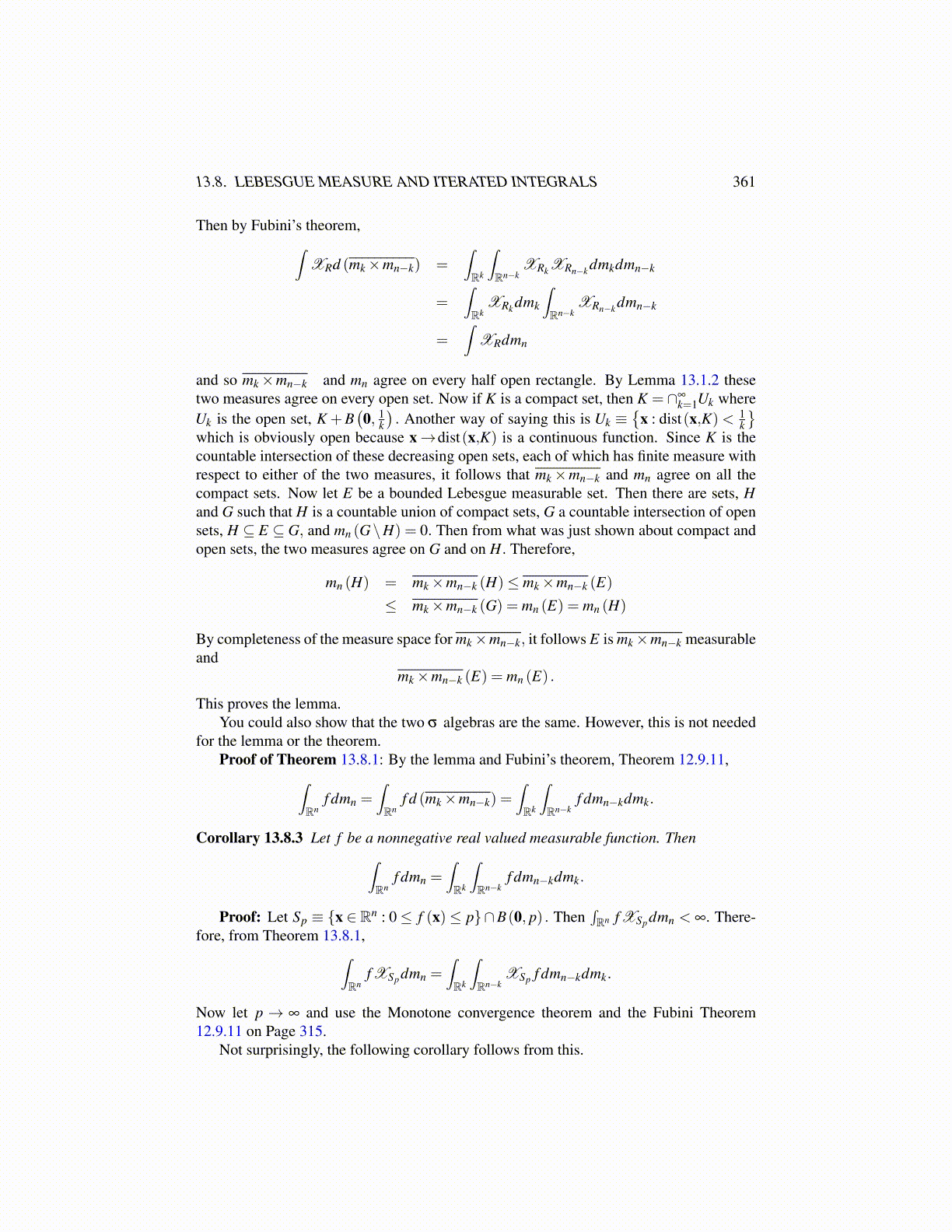
13.8. LEBESGUE MEASURE AND ITERATED INTEGRALS 361
Then by Fubini’s theorem,∫XRd (mk×mn−k) =
∫Rk
∫Rn−k
XRkXRn−k dmkdmn−k
=∫Rk
XRk dmk
∫Rn−k
XRn−k dmn−k
=∫
XRdmn
and so mk×mn−k and mn agree on every half open rectangle. By Lemma 13.1.2 thesetwo measures agree on every open set. Now if K is a compact set, then K = ∩∞
k=1Uk whereUk is the open set, K +B
(0, 1
k
). Another way of saying this is Uk ≡
{x : dist(x,K)< 1
k
}which is obviously open because x→dist(x,K) is a continuous function. Since K is thecountable intersection of these decreasing open sets, each of which has finite measure withrespect to either of the two measures, it follows that mk×mn−k and mn agree on all thecompact sets. Now let E be a bounded Lebesgue measurable set. Then there are sets, Hand G such that H is a countable union of compact sets, G a countable intersection of opensets, H ⊆ E ⊆ G, and mn (G\H) = 0. Then from what was just shown about compact andopen sets, the two measures agree on G and on H. Therefore,
mn (H) = mk×mn−k (H)≤ mk×mn−k (E)
≤ mk×mn−k (G) = mn (E) = mn (H)
By completeness of the measure space for mk×mn−k, it follows E is mk×mn−k measurableand
mk×mn−k (E) = mn (E) .
This proves the lemma.You could also show that the two σ algebras are the same. However, this is not needed
for the lemma or the theorem.Proof of Theorem 13.8.1: By the lemma and Fubini’s theorem, Theorem 12.9.11,∫
Rnf dmn =
∫Rn
f d (mk×mn−k) =∫Rk
∫Rn−k
f dmn−kdmk.
Corollary 13.8.3 Let f be a nonnegative real valued measurable function. Then∫Rn
f dmn =∫Rk
∫Rn−k
f dmn−kdmk.
Proof: Let Sp ≡ {x ∈ Rn : 0≤ f (x)≤ p}∩B(0, p) . Then∫Rn f XSpdmn < ∞. There-
fore, from Theorem 13.8.1,∫Rn
f XSpdmn =∫Rk
∫Rn−k
XSp f dmn−kdmk.
Now let p → ∞ and use the Monotone convergence theorem and the Fubini Theorem12.9.11 on Page 315.
Not surprisingly, the following corollary follows from this.